Materials Research Society Fall Meeting 2022
In-person event, November 27 - December 2, 2022, Boston, MA

PNNL scientists will be at the 2022 Materials Research Society Fall meeting at the end of November.
(Image by Jamie Gority | Pacific Northwest National Laboratory)
Boston, Massachusetts
Pacific Northwest National Laboratory (PNNL) scientists will be joining their peers from around the world to discuss characterization, energy and sustainability, nanomaterials, and biomaterials and soft materials at the Materials Research Society (MRS) Fall 2022 conference. Check out a sampling of PNNL speakers and their teams and add them to your MRS schedule.
Learn more about available jobs at PNNL as well as recent materials science news.
PNNL presentations: November 28 | November 29 | November 30 | See program for full abstracts
Symposium Co-Organizers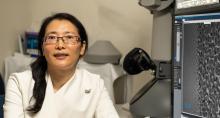 Symposium CH01—Understanding Dynamic Processes of Materials Synthesis, Self-Assembly and Processing via In Situ Techniques |
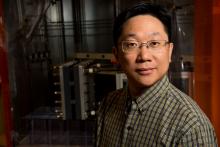 Symposium EN01—Redox Flow Batteries—Materials, Methods and Devices |
 Symposium EN07—Materials, Modeling and Technoeconomic Impacts for Emergent Applications of Large-Scale HydrogenSamantha Johnson |
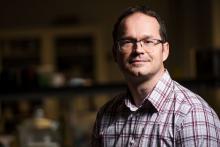 Symposium EN08—Scientific Basis for Nuclear Waste Management |
PresentationsNovember 28, 2022An In Situ Look at Interfacial Controls on Crystallization and Self-Assembly in Inorganic and Biomolecular Systems CH01.01.01, 10:30 a.m. ETInterfaces play a critical role in solution-based phenomena, such as ion segregation, mineral nucleation, and biomolecular and colloidal self-assembly. The interface alters the distribution of water and ions from that of the bulk, introduces an interfacial free energy that largely determines the free energy barrier for nucleation, and creates an entropic repulsion that acts like a volume exclusion force to drive colloidal assembly. The origin and characteristic length scales of these phenomena are inherently atomic-to-molecular but are manifest in ensemble dynamics and outcomes. Moreover, processes like nucleation and self-assembly arise from fluctuations, making the events that must be probed transient in nature. |
Understanding of Non-Classical Crystal Growth via Particle Assembly via In Situ Liquid Cell TEM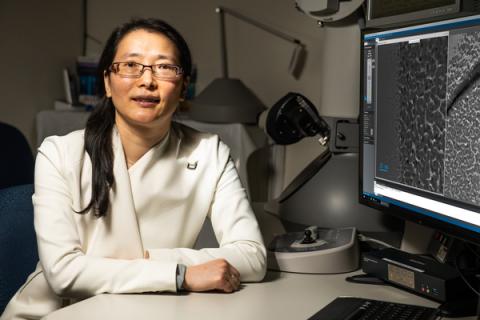 CHO1.01.02, 11 a.m. ETThe nanoparticle assembly into structures of superlattices and crystals attracts great attention due to their unique optical, thermoelectric, magnetic, energy storage, and catalytic properties. Understanding of mechanisms of particle assembly and interaction between active species can help to establish conditions to control the assembly process and structures of superlattices and crystals, which are closely tied to the physical and chemical properties. However, little is known about the driving forces and controlling factors during the process of particle self-assembly. In this work, we analyzed dynamic information of the process and investigated the Van der Waals force, steric hindrance, Brownian force, and the hydrodynamic force, based on measured particle positions and velocities by directly observing the process of particle self-assembly and tracking individual particles as a function of time via in situ TEM. |
Cryo and In Situ Electron Microscopy Diagnosis Guided Design of Materials for Rechargeable Battery CH03.01.02, 11 a.m. ETIn Situ and operando electron microscopy enable direct observation of process under dynamic operating condition of a device, representatively such as: real time observation of structural and chemical evolution of rechargeable batteries under battery operating condition; finding the active sites of catalyst; monitoring of mass transport during oxidation and reduction; observing nucleation and growth process in a liquid; visualizing defect generation and interaction during deformation; and capturing the response of materials to external stimuluses. In this presentation, I will focus on recent progress on using ex-situ, in-situ, operando and cryo-scanning transmission electron microscopy for probing into the structural and chemical evolution of electrode materials for lithium ion batteries, representatively such as Li and Si anode. |
November 29, 2022Direct Imaging of the Structural and Morphological Evolution of Epitaxial LiCoO2 Films During Charge and OverchargeYingge Du (presenter), Widitha Samarakoon, Jiangtao Hu, Miao Song, Mark Bowden, Nabajit Lahiri, Jia Liu, Le Wang, Timothy Droubay, and Jinhui Tao, along with colleagues from Oregon State University and Argonne National Laboratory  CH03.06.02, 2 p.m. ETCapacity decay of layered cathodes in high voltage applications underscores the need to utilize accurate and precise techniques to understand the underlying mechanisms. Here, we use well-defined epitaxial LiCoO2 (LCO) films on SrRuO3/SrTiO3 (SRO/STO) with controlled orientations and defect structures along with in situ electrochemical atomic force microscopy to probe the structural and morphological evolutions during the charge and overcharge processes. We quantitatively show the morphological changes in both reversible delithiation regime and irreversible over-delithiation regime, and correlate the overall electrochemical behaviors to atomic scale defect evolutions in the films. We also observe a significantly lower charging capacity for LCO/SRO/STO(111) compared to that of LCO/SRO/STO(001) films of the same thickness, which is ascribed to the different types of atomic scale defects formed during the film growth process. |
In Situ Reliability Investigation of All-Vanadium Redox Flow Batteries by an Ultra-Stable Reference ElectrodeQian Huang (presenter), Alasdair Crawford, David Reed, along with colleagues from the National Research Council Canada  EN01.02.04, 9:30 a.m. ETRedox flow batteries (RFBs) have been investigated over the past several decades as a promising energy storage system for grid applications due to their unique features that include the sVijayaeparation of energy and power output, high safety, and long cycle life. It is therefore vital but still in severe deficiency to understand the reliability of RFBs, and the mechanisms that cause degradation with time. One of the primary challenges involves the unseparated contributions from individual electrodes due to the lack of a stable reference electrode. In this work, a long-term stable reference electrode is developed for a scaled all-vanadium redox flow battery. |
Do Solvent Exchange Rate Drives Electrochemical Performance of Multivalent Ions?Vijayakumar Murugesan (presenter), Ying Cheng, Karl Mueller  EN03.05.08, 4:15 p.m. ETSolvation structures of metal ions have been considered as one of the key components that influence battery performances. Our work here reports that the solvation dynamics, i.e., how fast the solvents and anions exchange between the free and coordinating states, matters more in multivalent electrolytes due to the stronger interaction between the multivalent cations and the solvents/anions compared to monovalent cations. Based on our previous work on magnesium bis(trifluoromethanesulfonyl)imide (MgTFSI2) in 1,2-dimethoxyethane (DME), where Mg2+ ions form stable fully solvated clusters [Mg(DME)3]2+ at ≥ 0.1 M, we prepare a variety of mixed-solvent electrolytes by maintaining a Mg : DME molar ratio of 1:3 while varying cosolvents ranging from tetrahydrofuran (THF), 2-methyltetrahydrofuran (MeTHF), bis(2,2,2-trifluoroethyl) ether (BTFE), propylene carbonate (PC) to acetonitrile (ACN), trimethylsilyl imidazole (TMSI) and 2-Methoxyethylamine (MEA). Multinuclear (1H, 13C, 19F, and 17O) NMR studies of these MgTFSI2-3DME-cosolvents reveal a wide range of solvation structures with a fraction of DME, cosolvent or TFSI- forms stable first solvation sheath with Mg2+. |
Effective Immobilization of Iodine with Ag0-Aerogel—Different Matrices and Processing ConditionsJosef Matyas (presenter), Joshua Silverstein, Matthew Asmussen  EN08.05.05, 10 a.m. ETOne of the primary challenges for reprocessing of spent nuclear fuel, vitrification of nuclear waste, and development of advanced and innovative reactors and their nuclear fuel cycles is to immobilize iodine into durable and economically viable waste forms. These waste forms must meet criteria of high iodine loading, high chemical durability, and low processing costs. There has been significant progress made over the years with silver-functionalized silica aerogel (Ag0-aerogel) as a means for efficient removal and sequestration of iodine from various off-gas streams. The number of lab- and bench-scale consolidation tests with hot isostatic pressing and spark plasma sintering were demonstrated. |
November 30, 2022Unveiling the Role of Electrolyte on Solid-Electrolyte Interphase Formation and Structure of Li DepositYaobin Xu (presenter), Ji-Guang Zhang, Wu Xu, Chongmin Wang, along with collaborators from Pennsylvania State University  CH03.09.03, 11 a.m. ET.The morphology of electrochemically deposited lithium (EDLi) plays critical role on the cycling stability and safety performance of Li metal batteries. However, However, formidable challenges and shortcomings of Li metal electrode are currently plaguing its practical application, and the two greatest ones are safety and cycle life. Both of which are associated with the dendritic Li deposition morphology.1-4 Especially, the key parameters that control the morphologies remain largely obscure. Here we use cryogenic transmission electron microscopy (cryo-TEM) to probe, at atomic level, the features of solid electrolyte interphase (SEI) on Li particle and Li whisker formed in the same coin cell using carbonate electrolyte and ether electrolyte. |
The Stabilization of Particulate Solid Wastes in Ambient Temperature Waste FormsAlessandra Lie Fujii Yamagata (presenter), Matthew Asmussen, Sarah Saslow, Gary Smith  EN08.08.06, 9:30 a.m. ETDuring the processing of nuclear wastes, different particulate solid secondary wastes (SSW) can contain radionuclides and other contaminants. In many cases, these spent particulate materials will require stabilization/blending for disposal. Ambient temperature waste forms, such as cementitious waste forms, are common candidates for the stabilization of SSW due to their low cost, receptiveness to a variety of material types, tailorable properties and ability to meet various waste acceptance criteria. A variety of solid secondary wastes (SSW) have been investigated for stabilization in ambient temperature waste forms, including silver mordenite (AgZ), granular activated carbon (GAC), high efficiency particulate air (HEPA) filters, and organic-based ion exchange resins. This presentation will cover the development and characterization of candidate ambient temperature waste form formulations for the stabilization of these SSW with a focus on overlapping behaviors and unique challenges to specific SSW types. |
Direct Synthesis of Vertically Oriented π-Conjugated Metal-Organic Frameworks on Conductive SubstratesSun Hae Ra Shin (presenter), Jinhui Tao, Maria Sushko, Nathan Canfield, Mark Bowden, Praveen Thallapally  NM07.08.23, 8 p.m. ETThe π-conjugated metal–organic frameworks (MOFs) are a new class of MOFs with strong in-plane π-conjugation and weak out-of-plane π-π stacking. The π-conjugated MOFs exhibit notable properties such as intrinsic porosity, crystallinity as well as excellent electrical conductivity mediated by delocalized π-electrons. These unique features have motivated increasing effort to explore the π-conjugated MOFs for promising device applications in optoelectronics, catalysis, and energy that require the π-conjugated MOFs in the form of thin film or coating. In this study, vertically aligned triphenylene catecholate-based MOFs were directly grown on conductive substrates by a simple hydrothermal method. Effects of substrate identity such as surface chemistry and roughness on crystal growth behavior such as nucleation density, orientation, and growth kinetics were investigated. |
Controlled Assembly of Sequence-Defined Pepoids into Hierarchical Materials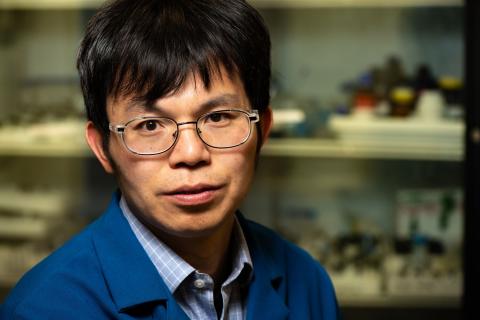 SB08.07.03, 2 p.m. ETPeptoid (N-substituted glycines), as one of the unique sequence-defined synthetic “foldamers that mimic proteins and peptides for functions, - have recently received increasing attention for the design and synthesis of biomimetic nanomaterials with hierarchical structures. 1 Due to the unique proteinase-resistance, chemical and thermal stabilities of peptoids, peptoid-based nanomaterials are promising candidates for applications in photonics, 2, 3 flexible electronics, 4 and biological systems. 2, 3, 5 Recently, by designing amphiphilic peptoids that contain aromatic hydrophobic domains, our group recently reported their self-assembly into highly crystalline membrane-mimetic 2D nanosheets2, 6 and 1D nanotubes, 7 we demonstrated that these peptoid-based nanomaterials are highly stable and a wide range of functional groups can be precisely placed within these materials to achieve programmable functions. To gain a better understanding of their formation mechanisms of these biomimetic materials, herein, I will report my group’s recent discovery of designing short peptoid oligomers, including tetramers, for controlled assembly into twisted nanoribbons, helices, along with nanosheets and nanotubes. Mechanistic studies using X-ray diffraction, AFM, TEM combined with computational simulations indicate the asymmetric packing of amphiphilic peptoids is the main driving force that leads to the formation of twisted nanoribbons and nanohelices. Tuning hydrophilic side chain chemistry and the number of hydrophobic side chains can significantly influence the peptoid assembly pathways and dynamics for the formation of hierarchical materials with designed morphologies. |